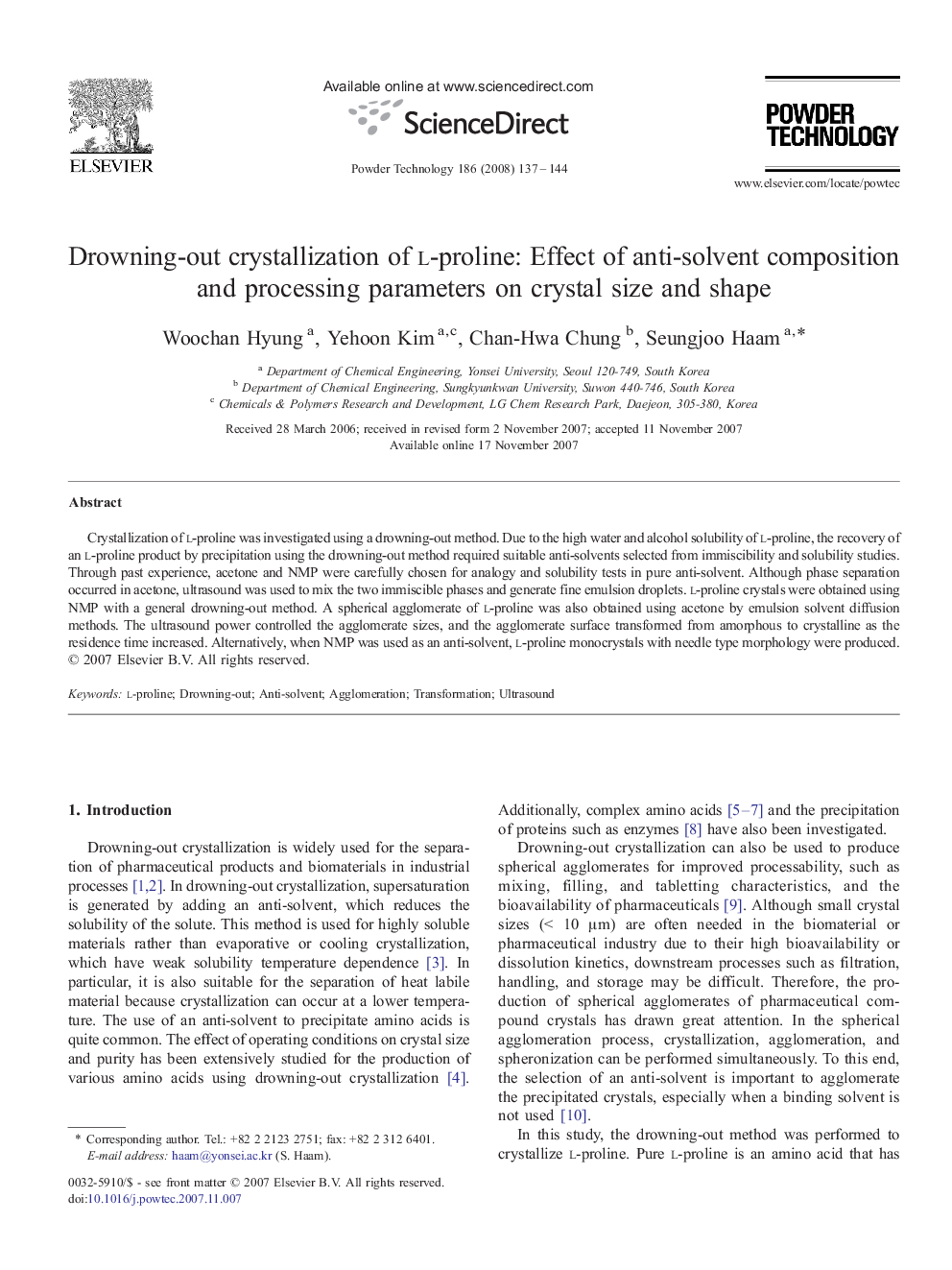| Article ID | Journal | Published Year | Pages | File Type |
|---|---|---|---|---|
| 238884 | Powder Technology | 2008 | 8 Pages |
Crystallization of l-proline was investigated using a drowning-out method. Due to the high water and alcohol solubility of l-proline, the recovery of an l-proline product by precipitation using the drowning-out method required suitable anti-solvents selected from immiscibility and solubility studies. Through past experience, acetone and NMP were carefully chosen for analogy and solubility tests in pure anti-solvent. Although phase separation occurred in acetone, ultrasound was used to mix the two immiscible phases and generate fine emulsion droplets. l-proline crystals were obtained using NMP with a general drowning-out method. A spherical agglomerate of l-proline was also obtained using acetone by emulsion solvent diffusion methods. The ultrasound power controlled the agglomerate sizes, and the agglomerate surface transformed from amorphous to crystalline as the residence time increased. Alternatively, when NMP was used as an anti-solvent, l-proline monocrystals with needle type morphology were produced.
Graphical abstractCrystallization of L-proline was investigated using a drowning-out method. A spherical agglomerate of L-proline was also obtained using acetone by emulsion solvent diffusion methods. The ultrasound power controlled the agglomerate sizes, and the agglomerate surface transformed from amorphous to crystalline as the residence time increased. Alternatively, when NMP was used as an anti-solvent, L-proline monocrystals with needle type morphology were produced.Figure optionsDownload full-size imageDownload as PowerPoint slide
